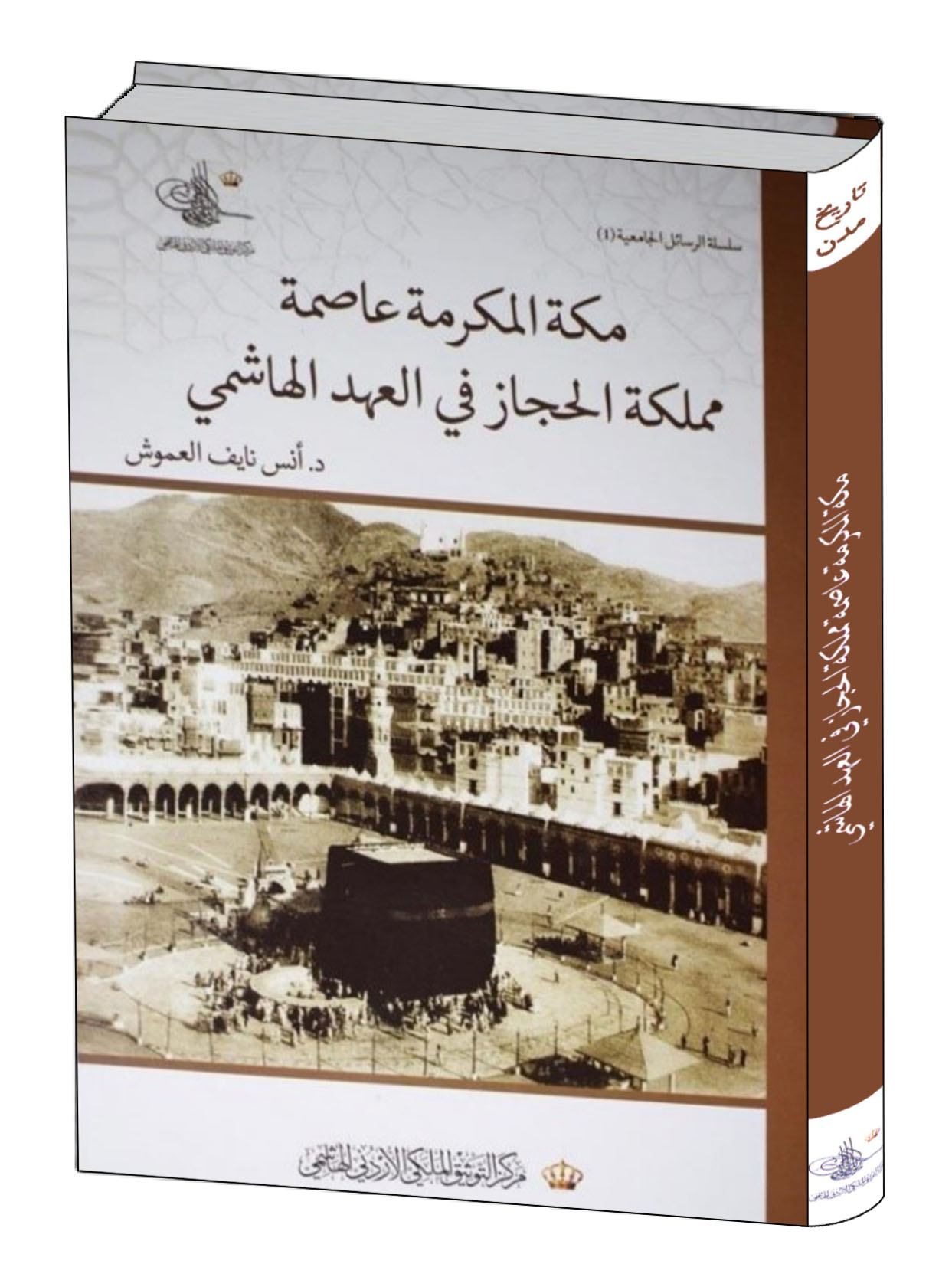Makka al Mukarrama—‘āsimat Mamlakat al Hijāz fi-l ‘Ahd al Hāshimiy
 “Makka al Mukarrama—‘āsimat Mamlakat al Hijāz fi-l ‘Ahd al Hāshimiy” - Mecca as the Capital of the Hijaz in the Hashemite Era" by Dr. Anas Naif Al-Amoush was published by the Royal Hashemite Documentation Center in Jordan. It's part of a university thesis program focusing on the contemporary history of Jordan and the Hashemite family, including their roles in Arab and Islamic history. The study examines the history of Mecca, the capital of the Hashemite Kingdom of Hijaz (1916-1925), initiated by Sharif Hussein bin Ali's major uprising. This scientific study provides a clear account of Mecca's society, cultural, social, and economic life, along with the reforms introduced by Sharif Hussein bin Ali, including overall construction and reforms in the city.
“Makka al Mukarrama—‘āsimat Mamlakat al Hijāz fi-l ‘Ahd al Hāshimiy” - Mecca as the Capital of the Hijaz in the Hashemite Era" by Dr. Anas Naif Al-Amoush was published by the Royal Hashemite Documentation Center in Jordan. It's part of a university thesis program focusing on the contemporary history of Jordan and the Hashemite family, including their roles in Arab and Islamic history. The study examines the history of Mecca, the capital of the Hashemite Kingdom of Hijaz (1916-1925), initiated by Sharif Hussein bin Ali's major uprising. This scientific study provides a clear account of Mecca's society, cultural, social, and economic life, along with the reforms introduced by Sharif Hussein bin Ali, including overall construction and reforms in the city.
The 356-page book, originally a doctoral thesis discussed at the Jordanian University in 2020, consists of an introduction, a preliminary chapter, five main chapters, and a conclusion. The researcher relied on original historical sources such as Arab and foreign documents, newspapers, journals, memoirs, telegrams, travels, and reports.
The introduction includes the study's significance, methodology, reasons for choosing the topic, research problem, previous studies, and primary sources used. The preliminary chapter covers the geographical aspects of Mecca, its name, and climate, and briefly outlines the significant developments and events in Mecca at the end of the Ottoman era and the beginning of the 20th century.
The first chapter discusses the political and judicial life in Mecca, its religious and strategic significance, and the reasons for its electing as the capital of the Kingdom of Hijaz. It also highlights the major political authorities and the role of the royal palace in managing political, administrative, and religious institutions.
The second chapter details the civil and military institutions established in Mecca, such as the municipality, health department, communications, army, and police.
The third chapter focuses on the scientific and cultural movement in Mecca, covering the learning circles in the Holy Mosque, schools, printing and media, the Meccan Library, authors, poets, and their impact on public life.
The fourth chapter highlights the social life in Mecca, including population demographics, residents' lifestyles, clothing, customs, traditions, marriage, entertainment, events, transportation, and the locals' stance on public issues.
The fifth chapter explores Mecca's economic life, discussing the role of Jeddah Port, maritime navigation, industrial and commercial activities, markets, the monetary system, and prevalent professions and crafts.
The conclusion presents the researcher's findings. Additionally, the Royal Hashemite Documentation Center, established in 2005 by a royal decree, focuses on documenting and archiving Jordan and the Hashemite family's history. The center's publications undergo academic peer review and linguistic editing before publication.
The publications from the Hashemite Documentation Center are not translated into English. Institutions and publishing houses interested in publishing a translated version should contact the center at the following email address: Info@rhdc.jo. This offers an opportunity for broader access to these valuable historical resources for non-Arabic speaking audiences and researchers